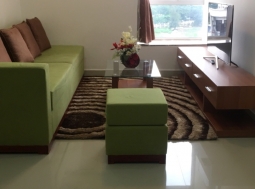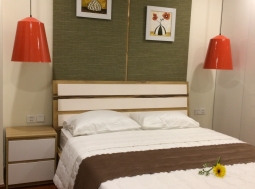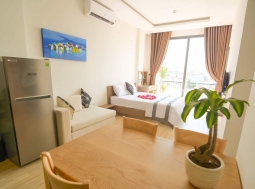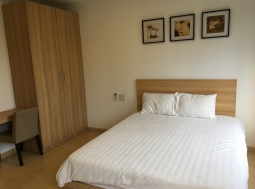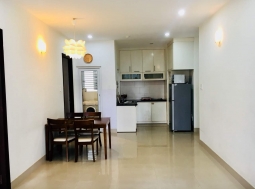Tips for Setting Up Your First Home Office
Tips for Setting Up Your First Home Office
Working from home offers many advantages including the flexibility of setting your own schedule, saving time, and gas money by eliminating your daily commute. However, being successful in a home office requires creating an office space that promotes efficiency in a non-traditional work environment. Consider the following tips to help define a professional working space for your new business.
Before claiming a corner in one of your rooms and calling it an office, make a detailed list of your most basic needs for a home office or a "critical needs" list. Your needs list should include a desk, computer, printer, and telephone.
If you are a graphic artist, for example, you may need both a small desk for your computer and a larger table or workspace for your artwork.
However, if you are a consultant, you may need additional space for several locking, fireproof file cabinets, and possibly space for clients to meet with you. When making your list of critical needs, it is important to think about how you plan to use the home office.
Once you have made your critical needs list, you have a better idea of how much space you need for the office and can set aside a dedicated area of your home. Ideally, the office should be in a quiet area with some level of privacy. This is especially important if you share the house with a spouse, children, or even a roommate.
For example, a spare room with a door may be best because it can help filter noise from the rest of the house, particularly if you'll be on the phone frequently. Or, if you'll be meeting with clients in your home office, it may be more efficient to choose a room near the front entrance of the house.
Often, a home office has a limited amount of space and can feel cramped even with only a chair and desk in the room. However, maintaining a professional office is dependent upon a good organization. That means planning a space that has plenty of room for both storage (files, supplies, etc.) and an ample work area. You may have to get creative.
For example, build your own desk that uses file cabinets as the base with wooden or a laminate countertop for the top. You may also have to store files in another room. A rule of thumb is that any files or supplies that you use frequently should be easily accessible. Again, the goal is to create an organized office space that meets all of your basic needs and allows you to function efficiently.
- Brighten Your Home Office With Proper Lighting
When possible, choose a space for your office that allows plenty of natural light. You can also enhance the area with direct lighting. Start by providing general, overhead lights that fill most of the work area. Next, consider adding task lighting, or desk lamps, and floor lamps that can give concentrated lighting to your specific work area.
Finally, regardless of the type of lighting available, make sure that your computer screen is positioned so that it prevents glare from occurring. The object is to create balanced lighting that minimizes eye strain.
- Use a Dedicated Phone for Your Home Business
One of the many benefits of working from home is having reduced overhead. However, the initial savings from sharing a phone line with your home and business can ultimately cost you. A home phone is less professional and may allow clients to question the legitimacy of the business.
One of the common pitfalls of using a home phone is having to share voicemail that uses a message from both family and business. It confuses customers. Likewise, when sharing a phone, you risk having a child or other family member answers the phone, giving the impression that you are not running a real business. It is best to use a dedicated phone for your home office. Of course, this can include using a cell phone, or a VoIP (Internet-based) phone.
- Invest in the Right Home Office Equipment
Getting started in your home office by using the right equipment is essential, and phones are not the only must-have pieces of equipment. Unfortunately, it can be tempting to skimp on key equipment and splurge on unnecessary items, such as office decor.
Money should be spent on a good desk with proper workspace, a comfortable chair that can provide back support, a computer with efficient memory and performance, a fast Internet connection, and any other specialized equipment, tools, or software that is key for performance in your area of expertise.
- Separate the Professional From the Personal
When working from home, it is important to keep your personal life from spilling over into your business life (and vice versa). Setting up a business bank account is the first step in helping you avoid mixing personal expenses with your business expenses.
To further reduce confusion, try to store personal checks, records, and even mail in a room separate from your office. Fully segmenting these two parts of your lives may also help at tax time.
Tax deductions related to home offices are increasingly scrutinized, and the more you can prove that the office is a completely separate and dedicated area, the better in terms of meeting IRS definitions of a home office.
- Utilize Formal Processes and Procedures in Your Home Office
There is no need to write a formal employee handbook or publish a list of office rules, but determining a formal system of operations for your home office is useful.
A handbook should include everything from standardizing record-keeping and paying invoices to logging time with customers and mileage for business trips. Keeping a few formal procedures in place for standard business functions will ensure your office stays organized, and that information is available where and when you need it.
- Establish Office Hours
Flexibility is a key benefit of working for yourself in a home office but it still requires that you put in a fair amount of time. Setting a typical schedule for working in your office will help you stay focused. Perhaps even more important, keeping standard office hours (for the most part) also helps your clients know when you are available.
After all, you might do most of your creative work in the middle of the night, but your clients are likely to keep more traditional work hours. As a result, you'll need to make yourself available during the hours that your clients are at work. Establishing office hours can also help minimize distractions, and unannounced calls, or drop-in visits from well-meaning friends and family.
- Keep Time: Hang a Clock in Your Home Office
Once your office hours are set, don't forget to hang a clock on a wall or place one on your desk. While this may seem laughable and obvious, the truth is that when working from home, it's easy to forget about time. Before you know it, you have worked a 14-hour day, for the third day in a row. Even though your work is at home, there still comes a time when you have it to call it a day and shut the door to your office.
RELATED NEWS
- Office for rent in Da Nang – Outstanding office for rent in variety of standard
- Office for rent in Da Nang with Thuenhanhhon
- Office Feng Shui: Place Your Desk In The Command Position
- 7 Ways to Feng Shui a Cubicle, Desk or Entire Office
- 5 Ways That Natural Light Improves Workplace Productivity
- 5 Things About Office Lighting You Should Know
- 8 Ways To Make Your Workspace Healthier
HOT REAL ESTATE






















